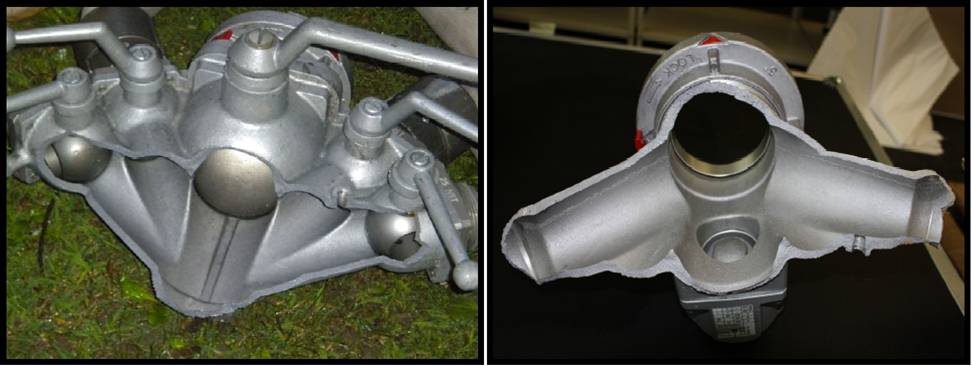
Incident Report Subject: New Jersey Division of Fire Safety Releases Fire-fighter Injury Report Related to Catastrophic Failure of Large Diameter Hose Appliance Date of Email report: Thu 02/02/2012 Report Detail:
After exhaustive testing by a competent metallurgical testing laboratory it was determined that the failure of the LDH manifold was due to several factors including: the material had little to no fracture toughness, the casting quality was poor, the casting contained numerous voids, large casting defects (voids) were present in the housing wall at the threaded inlet, slag or dross (containing sodium, silicon, oxygen, iron, sulphur, and other elements) was present within some of the voids. It was noted in the report issued by Corrosion Testing Laboratories, the contracted vendor to perform testing on the manifold, that better manufacturing practices would improve the fracture toughness of the casting by reducing the size and number of voids, removing slag or dross from the casting, assuring there is no trapped hydrogen to cause voids, improving the microstructure to minimize the deleterious effects of sharp, brittle second phases through various measures such as better control over solidification times, alloy modification, etc. Use of an alloy such as A356 with lower iron content would reduce the number of brittle second phase particles. Post-manufacturing inspection using x-rays could help to identify castings with large voids. As stated in this report, pressurized devices such as this and other equipment utilized by fire departments on a routine basis have the potential; although slight, to fail violently causing injuries and even fatalities. Fire-fighters must always be cognizant of these potential dangers and operate in such a way as to minimize risks as much as possible through the appropriate use of PPE and safe operational practices. Due to the fact that no federal agency has been identified that is willing to address this issue, we will be asking national and international fire service organizations to assist in getting this information out to the fire service beyond New Jersey. We also ask that any readers of this report notify the NJ Division of Fire Safety if they have experienced a similar failure of a device. As has been stated in previous investigative reports issued by the NJ Division of Fire Safety, fire fighting is an inherently dangerous occupation. Keeping this in mind, fire-fighters should rededicate themselves to remove or reduce those hazards that can be eliminated or reduced. Additional Documentation: |

